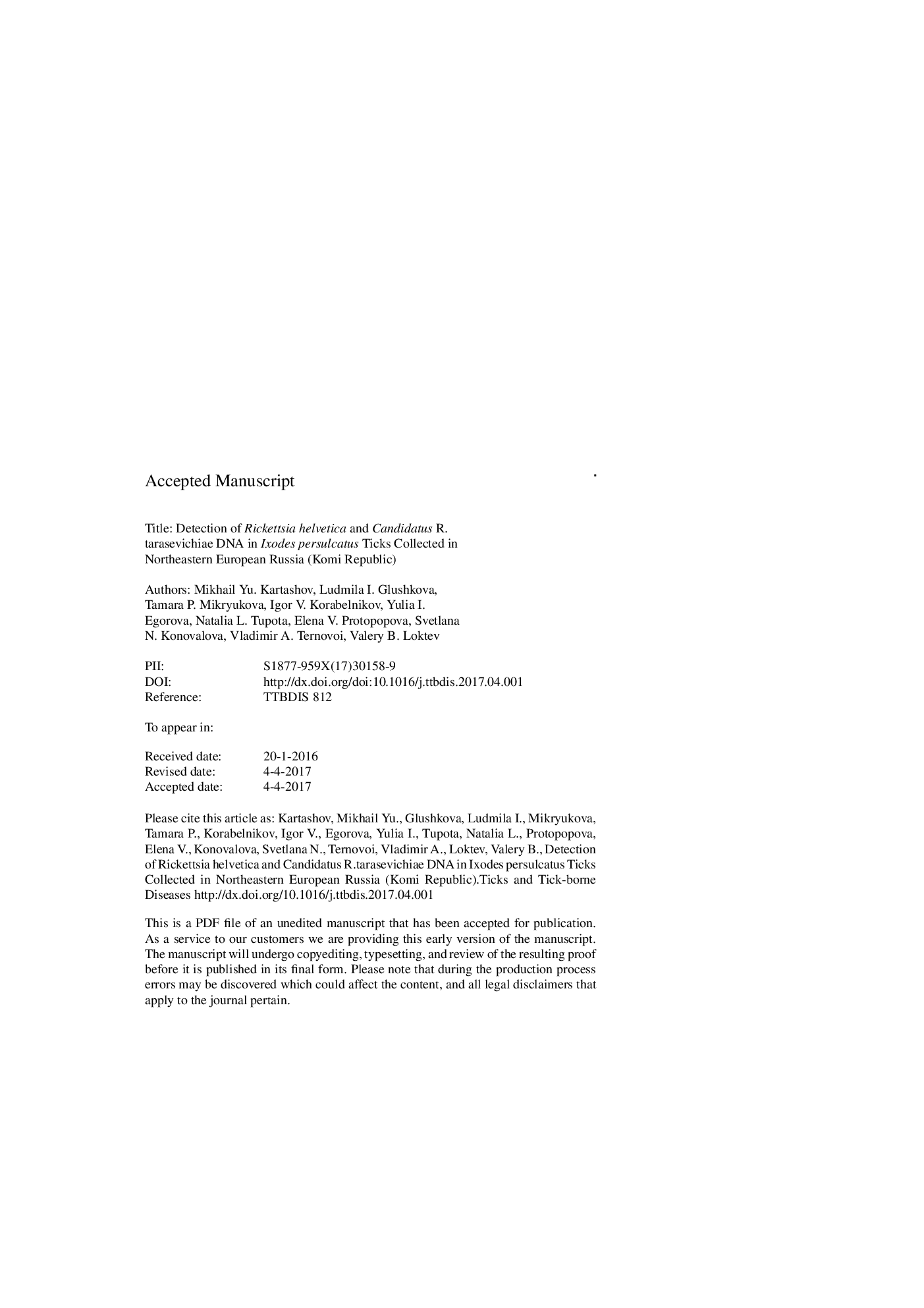| Article ID | Journal | Published Year | Pages | File Type |
|---|---|---|---|---|
| 5546309 | Ticks and Tick-borne Diseases | 2017 | 20 Pages |
Abstract
The number of tick-borne infections in the northern European regions of Russia has increased considerably in the last years. In the present study, 676 unfed adult Ixodes persulcatus ticks were collected in the Komi Republic from 2011 to 2013 to study tick-borne rickettsioses. Rickettsia spp. DNA was detected by PCR in 51 (7.6%) ticks. The nucleotide sequence analysis of gltA fragments (765 bp) from 51 ticks indicated that 60.8% and 39.2% of the ticks were infected with Rickettsia helvetica and Candidatus R. tarasevichiae, respectively. The gltA fragments showed 100% identity with those of Candidatus R. tarasevichiae previously discovered in Siberia and China, whereas R. helvetica showed 99.9% sequence identity with European isolates. The ompB had 8 nucleotide substitutions, 6 of which resulted in amino acid substitutions. In the sca9 gene, 3 nucleotide substitutions were detected, and only one resulted in amino acid substitution. The smpA, ompW, and β-lactamase genes of R. helvetica also showed a high level of sequence identity.
Related Topics
Life Sciences
Agricultural and Biological Sciences
Animal Science and Zoology
Authors
Mikhail Yu. Kartashov, Ludmila I. Glushkova, Tamara P. Mikryukova, Igor V. Korabelnikov, Yulia I. Egorova, Natalia L. Tupota, Elena V. Protopopova, Svetlana N. Konovalova, Vladimir A. Ternovoi, Valery B. Loktev,
